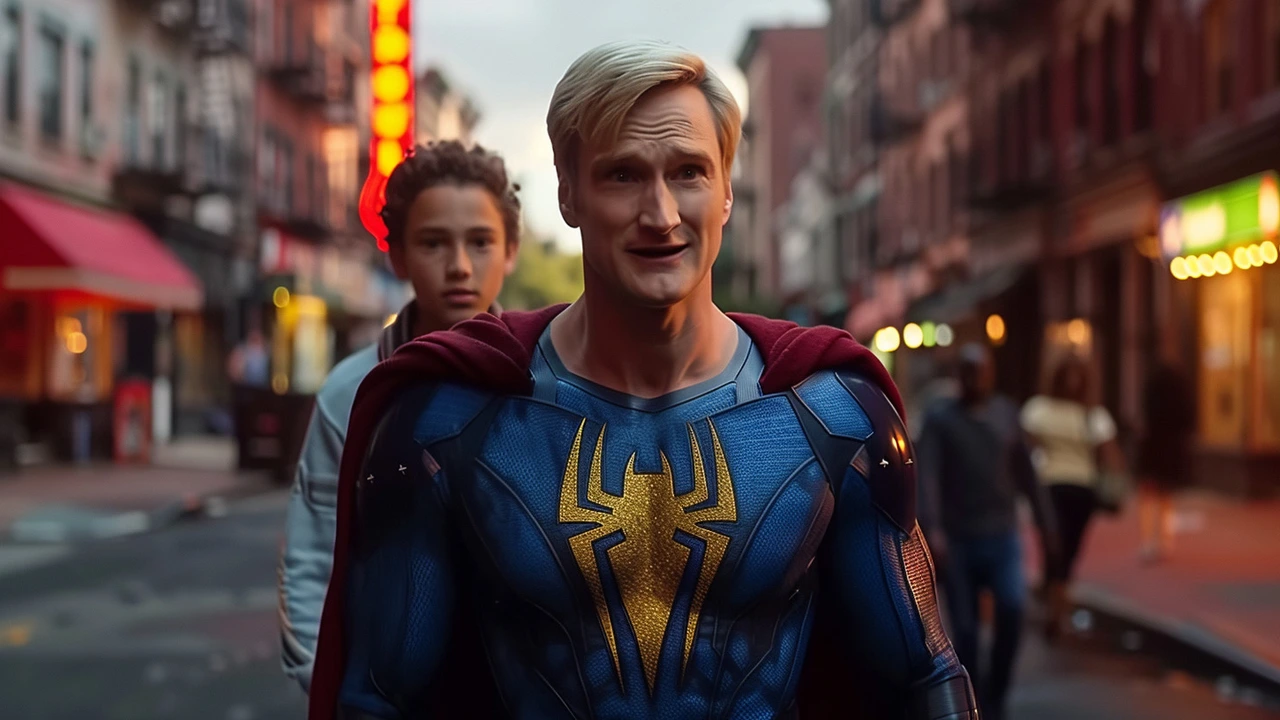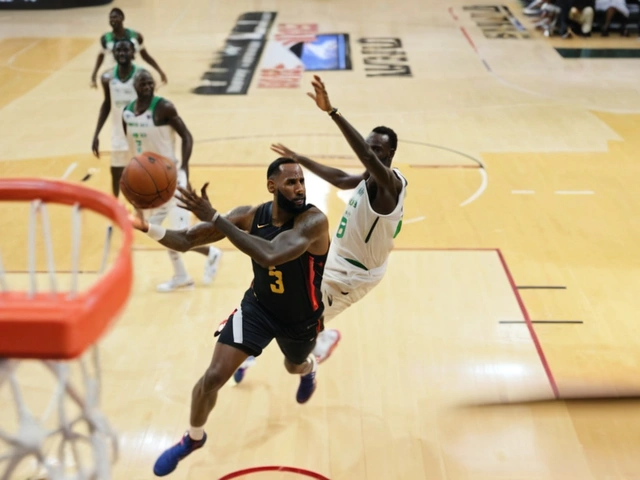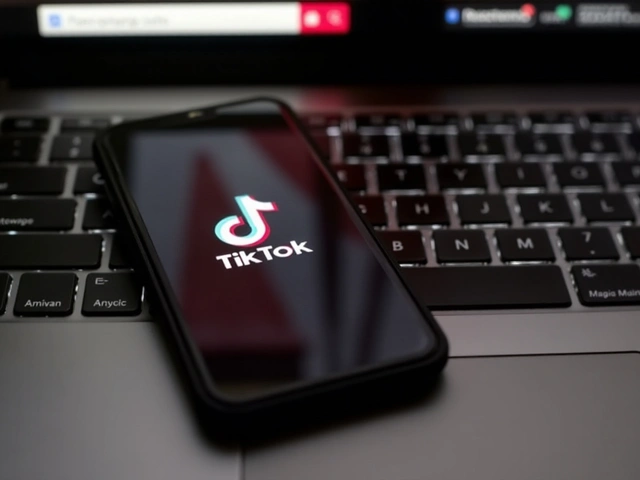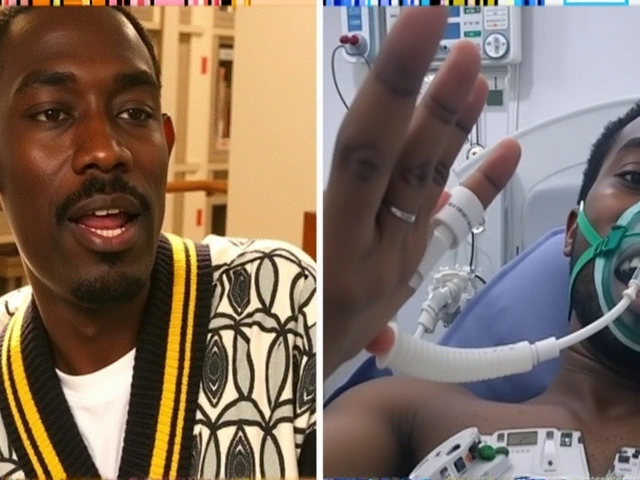The Boys Season 4, Episode 2 Recap: Deep Dive into ‘Life Among the Septics’ Unveiled

The Boys Season 4 Episode 2: Life Among the Septics
Season 4 of The Boys continues to uncover the layered complexities of its characters in the episode titled ‘Life Among the Septics.’ This chapter reveals not just the current confusions and conflicts but also the deep-seated traumas that each character wrestles with every day. The episode highlights themes of unhealed wounds, guilt, and the ongoing battle between doing what is right and grappling with personal flaws.
Hughie's Unresolved Childhood Trauma
The episode opens with a poignant exploration of Hughie's struggles with abandonment, a lasting scar from his mother who left him and his father when Hughie was just six years old. The emotional tension reaches a boiling point as Hughie’s mother unexpectedly reenters his life. Her sudden appearance in his father's hospital room reignites the pain of a long-broken promise related to Billy Joel concert tickets. Hughie confronts her, seeking answers and resolution, but the encounter only reinforces the complexities of familial relationships and the deep-seated hurt of a child abandoned by a parent.
Annie Starlight's Quest for Justice
Meanwhile, Annie Starlight is on a mission to clear the names of two Black Starlighters wrongly framed by A-Train for the murder of three Hometeamers. Her pursuit for justice is relentless as she and Hughie conduct a stakeout at a park frequently visited by A-Train. Their perseverance pays off when A-Train, wracked by guilt, hands over security footage that exonerates the Starlighters. However, A-Train’s internal conflict is evident as he continues to struggle with his culpability and a genuine desire for redemption, albeit hindered by his inertia.
Frenchie's Dark History Revealed
The episode doesn’t shy away from shedding light on darker backstories, including Frenchie’s haunting past. The revelation that he murdered his current boyfriend Colin's family while under Little Nina's orders adds a layer of tragic irony and emotional conflict to their relationship. Frenchie's wrestling with his actions serves as a powerful reminder of the past’s grip on the present, shaping freedoms and constraints alike.
Kimiko's Healing Journey
Kimiko's selective mutism, a symptom of her brutal past with the Shining Light Liberation Army, becomes a focal point as she begins attending therapy sessions. Her journey towards healing mirrors the struggles many face when dealing with the aftermath of trauma. Therapy offers her a glimmer of hope and a path towards reclaiming her voice and agency, a significant development in her character arc.
TruthCon and the Battle with Firecracker
The episode reaches a climactic point at a QAnon-esque conference dubbed TruthCon. Here, the team confronts alt-supe Firecracker and her fanatic follower Splinter, who possesses the formidable ability to spawn clones of himself. The battle is intense, showcasing the high stakes and relentless opposition the characters face. Nevertheless, victory is won, albeit with visible strain on team dynamics, particularly between Mother's Milk and Butcher. Butcher's deteriorating health adds additional layers of tension, raising the stakes and urgent questions about the future direction of their collective mission.
The Larger Implications
‘Life Among the Septics’ delves deep into exploring whether the characters can overcome their past to build a better future. The characters are depicted as grappling with significant internal and external conflicts. The episode is a rich tapestry of themes dealing with guilt, redemption, and the elusive path to healing. Each character's journey asks the audience to consider the weight of past actions on present choices and the possibility of change.
Whether addressing familial betrayals, seeking justice against false accusations, or facing the profound weight of guilt, ‘Life Among the Septics’ shines light on the importance of confronting and acknowledging one’s vulnerabilities. It’s a narrative binding together the fragile yet resilient human spirit under the pressure of extraordinary circumstances, all while questioning the true nature of heroism.






Jordan Bowens
June 13, 2024 AT 20:35Just another noisy episode, nothing fresh.
Kimberly Hickam
June 13, 2024 AT 22:48In the grand tapestry of modern anti‑hero narratives, The Boys continues to peel back the veneer of manufactured virtue, exposing the raw, oft‑uncomfortable truths that lie beneath. The second episode of season four, cleverly titled “Life Among the Septics,” functions as a crucible in which each character’s unresolved trauma is reheated, distilled, and presented for the audience’s reluctant consumption. One cannot discuss Hughie’s sudden encounter with his mother without confronting the broader philosophical question of whether familial abandonment can ever truly be forgiven, or merely managed through the shallow comforts of vengeance. The scene, drenched in muted lighting and punctuated by the occasional clink of hospital equipment, offers a meditation on the lingering echo of a broken promise-one that once involved concert tickets, now morphed into a symbol of shattered trust. Moreover, the juxtaposition of Annie Starlight’s relentless pursuit of justice against the backdrop of A‑Train’s guilt‑laden confession reveals a nuanced commentary on the price of redemption in a world that glorifies spectacle over substance. Frenchie’s revelation about the murder of Colin’s family, while shocking, serves as an allegorical reminder that the past is an omnipresent spectator, forever judging the present with an unforgiving stare. Kimiko’s tentative steps toward therapy are not merely plot devices; they resonate with the lived experiences of countless survivors who grapple with the inertia of selective mutism. The TruthCon sequence, with its QAnon‑esque fervor, demonstrates how charismatic manipulation can coalesce into a dangerous cultic momentum, a phenomenon not dissimilar to the real‑world proliferation of disinformation. Firecracker’s chaotic clone‑spawning ability, while visually spectacular, raises existential queries about the nature of individuality when multiplied ad infinitum. The physical toll on Butcher and Mother’s Milk, observed through strained glances and labored breaths, underscores the narrative truth that heroism is not a perpetual state of stamina but a fragile equilibrium, constantly threatened by internal decay. The episode, therefore, operates on multiple strata: as a surface‑level action spectacle, a mid‑level character study, and a deep‑seated philosophical treatise on guilt, redemption, and the possibility of genuine change. In essence, the writers have crafted a deliberately uncomfortable viewing experience, forcing the audience to reckon with the unsettling notion that true healing is an arduous, non‑linear process. The thematic consistency throughout the episode-from the broken tickets to the broken bodies-serves as a stark reminder that the world of The Boys is gloriously, brutally, and unapologetically human. Finally, one must acknowledge the meticulous direction that balances visceral combat with tender, introspective moments, a testament to the show’s evolving narrative ambition. In sum, “Life Among the Septics” does not merely entertain; it interrogates, provokes, and ultimately invites a deeper reflection on what it means to live amidst the septic remnants of our own making.
Gift OLUWASANMI
June 14, 2024 AT 00:45Honestly, the narrative’s obsession with bleeding backstory feels like a gratuitous attempt at profundity, a thin veneer draped over what is essentially a glorified brawl. The writers sprinkle trauma like seasoning, hoping it will mask the lack of structural originality. I mean, Frenchie’s murderous past? It’s a cheap shock, not a nuanced exploration. And let’s not gloss over the fact that Hughie’s mother-show‑up is just an excuse to re‑hash the same abandonment trope. The show’s brilliance is in its ability to repack old wounds with flashier costumes. Still, the visual flair does keep the blood‑thirsty audience mildly entertained.
Keith Craft
June 14, 2024 AT 02:25Ah, the melodrama! One can’t help but feel the weight of every sigh, every trembling breath-like the producers hired a troupe of thespians to wine‑and‑dine our emotions. The way the camera lingers on Butcher’s pallor, the trembling hands of Mother’s Milk, it’s as if the entire set is soaked in a sorrowful perfume. Even the most hardened viewer is forced to confront the fragile mortals underneath the masks of cynicism. It is theatrically exquisite, though perhaps bordering on overwrought sanctimony.
Kara Withers
June 14, 2024 AT 03:48From a therapeutic standpoint, Kimiko’s approach to selective mutism is commendable. The show rightly highlights that therapy isn’t a one‑size‑fits‑all solution; it requires patience and consistent support. It might help viewers understand that trauma recovery can involve incremental steps, not instant breakthroughs. Also, the inclusion of a therapist character could spark conversations about mental health resources. It’s a positive step toward destigmatizing the process.
boy george
June 14, 2024 AT 04:55Appreciate the gentle nod to therapy, really.
Cheryl Dixon
June 14, 2024 AT 05:53While the emotional display is undeniably potent, it borders on the self‑indulgent, as if the writers are chasing the echo of their own dramatics rather than advancing the plot. The moral calculus is presented with the subtlety of a sledgehammer, forcing the audience to swallow platitudes about redemption without nuanced deliberation. Yet, one can’t deny the raw energy that seeps through the scenes, even if it feels pre‑packaged.
Ramesh Modi
June 14, 2024 AT 06:43Indeed! The moral high ground is elevated to a pedestal so lofty, it becomes inaccessible to any nuanced discourse. One must ask: are we being instructed, or merely patronized? The dramatics, while vivid, risk eclipsing the very complexities they aim to explore. Nonetheless, the fervor of the performance does inject a necessary vigor into the narrative, even if it teeters on excess.
Ghanshyam Shinde
June 14, 2024 AT 07:25Wow, another deep dive into the past-so fresh!
Charlotte Louise Brazier
June 14, 2024 AT 07:58Let's be real: the series keeps recycling the same trauma tropes, but at least it does it with unapologetic flair. If anyone's offended, they'd better brace themselves for the inevitable showdown-because the writers love a good spectacle over subtlety.
SAI JENA
June 14, 2024 AT 08:23Team, let’s channel this energy! Every setback is a setup for a comeback. Remember, perseverance fuels progress-keep pushing forward, and the results will speak for themselves.
Donny Evason
June 14, 2024 AT 08:43Indeed, the resilience displayed mirrors the archetypal hero’s journey-where adversity is but a catalyst for transformation. It is through these crucibles that we discern the true mettle of the characters and, by extension, ourselves. Embracing the paradox of strength within vulnerability becomes the leitmotif of this season.
Hariom Kumar
June 14, 2024 AT 09:02Absolutely! Keep the momentum high-every challenge is just another chance to shine 😊
Phillip Cullinane
June 14, 2024 AT 09:18The episode’s structural composition leverages a multi‑layered narrative framework, integrating character‑centric vignettes with macro‑scale conflict arcs. By juxtaposing Hughie’s private familial reckoning against the publicly orchestrated chaos of TruthCon, the writers create a dichotomous tension that catalyzes thematic resonance. Moreover, the utilization of visual metaphors-such as the septic imagery-functions as an allegorical conduit for the underlying decay permeating both personal psyches and institutional constructs. The intertextual references to contemporary sociopolitical movements further augment the series’ relevance, mapping fictional dystopia onto real‑world anxieties. From a production standpoint, the choreography of the clone‑spawn sequence demonstrates a sophisticated blend of practical effects and CGI, enhancing the visceral impact without compromising narrative cohesion. The sound design, particularly in scenes of heightened emotional distress, employs dissonant tonalities that underscore the characters’ internal dissonance. In essence, the episode succeeds in marrying spectacle with substantive character development, thereby reinforcing The Boys’ position as a seminal work in the anti‑hero genre.
Janie Siernos
June 14, 2024 AT 09:33Well, that was... a lot.
joy mukherjee
June 14, 2024 AT 09:47I hear you; it’s dense, but the depth adds richness-let’s unpack it together.
Rob Chapman
June 14, 2024 AT 09:58Great points all around, thanks for the insights.
Delaney Lynch
June 14, 2024 AT 10:08Really appreciated the overview-could you elaborate on how the visual symbolism ties back to the character arcs? I'm curious about the connective tissue between the septic motifs and the personal healing journeys depicted.